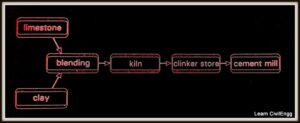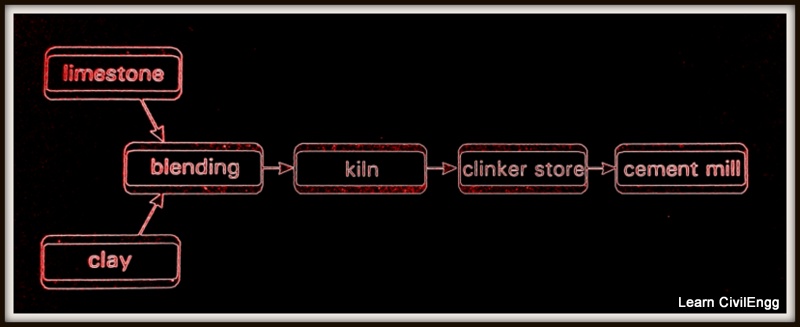Classification of cement
INTRODUCTION:
Cement is broadly described as a material having an adhesive and cohesive property with the capacity to bond the material like stone, bricks, building blocks, etc. It is a binder, a substance that sets and hardens independently, and can bind other materials together.
Classification of cement:
classification of cement Based on the source of cement:
1. Natural cement
2. Artificial cement
1. Natural cement:
Cement is obtained by burning and crushing 20-40% clay, carbonate of lime, and a small amount of magnesium carbonate. It is brown in color and the best variety is known as Roman cement, The natural cement resembles a very costly element hydraulic lime, and sets very quickly and strongly as compare to artificial cement. It finds very limited applications.
2. Artificial cement:
Artificial cement is obtained by burning the calcareous mixture at a very high temperature. A mixture of ingredients should be intimate and they should be in correct proportion. A calcined product is known as Clinker.
A small quantity of gypsum added to the clinker and pulverized to a fine powder is known as cement or ordinary cement or normal setting cement.
After setting, this cement closely a variety of sandstone which is found in abundance in Portland in the UK. Therefore, it is also known as Portland cement.
 |
| The basic components of cement |
Based on broad sense cement:
1. Natural cement,
2 Puzzolana cement,
3. Slag cement,
4. Portland cement.
1. Natural cement:
It is prepared from naturally occurring limestone by heating it to a high temperature and subsequently pulverizing It. During heating, both siliceous and calcareous materials are oxidized and combine to give calcium silicates and calcium aluminates.
2. Puzzolana cement:
It is the material which when mixed with lime without heating gives hydraulic cement.
They mainly contain silicates of aluminum, iron, and calcium natural Puzzolana which is found in deposits of volcanic ash consist of glassy material and simple mixing and grinding give the cement.
Similarly slaked lime also gives Puzzolana cement but they are the cement of ancient time and at present hardly used.
3. Slag cement:
It is made by mixing blast furnace slag and hydrated lime. Furnace slag largely contains silicates of calcium and aluminum which is granulated by pouring them into cold water.
Later it is dried and mixed with hydrated lime and the mixture is finely powdered to increase the rate of setting. Accelerators like clay, salt, or caustic soda may be added.
4. Portland cement:
This is a refined powder of calcined product of clay and limestone. It has a controlled composition. It is named after the paste of cement with water which resembled in color and hardness to the Portland stone.
PROPERTIES OF CEMENT:
Following are the important properties of good cement:
1. It gives strength to the masonry.
2. It is easily workable.
3. It offers good resistance to moisture.
4. It is an excellent binding material.
5. It possesses good plasticity.
6. It hardens early.
CEMENT AND LIME:
1. The cement can be used under conditions and circumstances which are not favorable for lime.
2. The cement, when converted into paste form, sets quickly.
3. The colors of cement and lime are different,
4. When water is added to the cement, no heat is produced and there is no slaking action.

